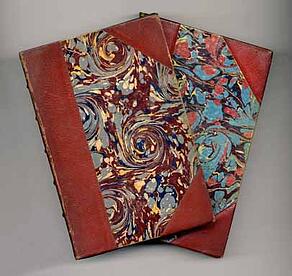Victor Hugo is rightly considered one of the great literary minds of the nineteenth century. His works highlight the political and social atmosphere in his French homeland over the course of history. However, even beyond the compelling nature of Hugo’s stories there is an education for literary enthusiasts of the Romantic, and specifically, the Gothic genre. An analysis of the juxtaposition between sublime and grotesque and the importance of place in The Hunchback of Notre Dame provides a fascinating look at just some of the elements of Gothic literature which Hugo expertly employed in the telling of this famous tale.
 Like other great Gothic texts (Shelley’s Frankenstein and the Bronte sisters’ masterpieces, to name a few), The Hunchback of Notre Dame takes readers on a dark journey and includes many of the commonly held and expected Gothic elements. Its characters are mysterious with secrets and murky pasts. Hugo expertly pairs the sublime against the grotesque in order to - as he argues in the preface to his play Cromwall - bring the realities of life into art form and make a stronger impact. In his own words:
Like other great Gothic texts (Shelley’s Frankenstein and the Bronte sisters’ masterpieces, to name a few), The Hunchback of Notre Dame takes readers on a dark journey and includes many of the commonly held and expected Gothic elements. Its characters are mysterious with secrets and murky pasts. Hugo expertly pairs the sublime against the grotesque in order to - as he argues in the preface to his play Cromwall - bring the realities of life into art form and make a stronger impact. In his own words:
“Sublime upon sublime scarcely presents a contrast, and we need a little rest from everything, even the beautiful. On the other hand, the grotesque seems to be a halting-place, a mean term, a starting-point whence one rises toward the beautiful with a fresher and keener perception.”
Both the character of the Hunchback as well as the great Notre Dame cathedral are examples of the way Hugo combines the beautiful with the mangled and gets readers to think more deeply about some of the themes of the novel: namely, free will vs. determinism as well as architectural deterioration and preservation as a symbol of fluctuating morality.
Subsequently, another element of Gothic literature which plays a key role in The Hunchback of Notre Dame is its focus on place. In Hugo’s novel, the place of note is most obviously the title cathedral. In fact, Hugo’s purpose when he set out writing The Hunchback of Notre Dame was to shed light on what he believed to be the value of Gothic architecture and the issues he saw with destroying it to make room for new and modern construction. Hugo set the scene in his preface by discussing an engraving which was seen on the wall of the tower of Notre Dame cathedral. He stated:“Since then the wall has been plastered over or scraped—I forget which—and the inscription has disappeared. For thus, during the past two hundred years, have the marvellous churches of the Middle Ages been treated. Defacement and mutilation have been their portion—both from within and from without.”
So central was the location of the grand cathedral to what Hugo saw as the essence of this story that he titled the novel Notre Dame de Paris. After all, almost all the major events that transpire take place in or around the cathedral, and most everything that occurred outside its walls can be seen from its towers. Scholars have since noted that Hugo was upset with the English title, The Hunchback of Notre Dame, because it focused too much on the Hunchback and too little on the setting of the cathedral.
Hugo’s novel and it’s pristine Gothic style merit an even deeper study than this basic one, and readers and collectors who enjoy this timeless tale are sure to take away their own nuggets of wisdom. After all, Victor Hugo’s novels have stood the test of time, and his stories are sure to stay with readers long after the final pages are turned.









